It was a long flight from New York City to Europe, via Reykjavik, with Icelandic Air. This was the last few weeks of our adventure and it was a packed itinerary, with Switzerland, Malta and Germany on the agenda.

Switzerland.
Jet-lagged from the Trans Atlantic flight we stretched our legs with a walking tour around the old part of Zurich. We wandered along the Limmat River and down to the Zurich Lake, through the narrow streets lined with cafes, restaurants and trendy boutiques.
The next morning we had another stroll around the old city centre. Our first stop was the train station to sort out our tickets for the next few days.
We then caught an afternoon train to Schaffhausen, where we were met by Heinz and taken down to the Rhine Falls, or Rheinfall. These are the largest plain water falls in Europe and were formed in the last ice age, somewhere between 14,000 and 17,000 years ago.
In the late afternoon we were joined by Mieke and she guided us around beautiful old Schaffhausen. The city has a long history, being first named as Villa Scafhusen in 1045. We visited the Allerheiligen Convent which was constructed between 1049 and 1064. Mieke insisted that we then make a brief stop at the local gaol, the venue of Thea’s famous indiscretion some 43 years earlier.
That evening we had a very pleasant meal of raclette, wine and conversation with Heinz and Mieke.
The next day we caught the train to Bern where we met up with Denis and Martine. The intention had been for the six of us to spend the weekend walking in the Bernese Oberland. Unfortunately the weather forecast was for storms, so we opted to spend a day in Bern and then drive back to Arnex and stay at Châteaux Barclay.
After a stroll around the main areas of Bern we caught the bus to the Paul Klee Centre. Klee is one of Bern’s favourite sons and the museum houses about 40% of his oeuvre. Completed in 2005 it was designed by the Italian architect Renzo Piano and features a wave formation roof line.
The current show was a joint exhibition, featuring the works Paul Klee (1897-1940) and Wassily Kandinsky (1866-1944). Both these men are considered to be the ‘fathers’ of Classical Modernism. As the curators notes said: “ …their friendship was one of the most fascinating of the twentieth century. Their relationship was shaped by mutual inspiration and support, but also by rivalry and competition.”
After an educational and entertaining few hours we then drove to Arnex, where we spent a very pleasant few days in this delightful Swiss/French village.
We had lunch at a restaurant on Le Chasseron, a peak in the Jura Mountains. It overlooked the Swiss Alps on one side and Sainte-Croix on the other.
Heinz and Mieke returned to Schaffhausen and we spent our last day with Martine’s extended family, at a Morel family picnic.
Denis then drove us to Yverdon, where we caught the train to Zurich.
Our next destination was Malta.
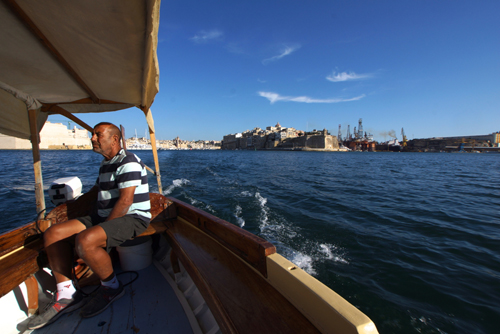
Malta.
Just 38 years after Christopher Columbus discovered the New World in 1492, the Knights of Saint John were putting down their roots in Malta.
The Knights of Saint John or Knights Hospitaller or Knights of Malta as they are variously known, are so important that the call sign for Air Malta is KM or Knights of Malta.
Currently Malta is a country under renovation. Everywhere you travel there are construction cranes and works in progress.
Huge scale building projects are being carried out on the Island of Malta and to a lesser degree on the smaller island of Gozo. It most cases this work is being 85% funded by the European Union.
On our first night in Malta we went to the nearest restaurant, Kalkara Regatta, it was right on the marina and only 100 meters from our guest house.
We sat outside and enjoyed the fireworks display that went on for nearly two hours.
It was part of a celebration to commemorate the end of the Great Siege of Malta. In 1565 the Ottoman Empire tried to invade Malta but were held off by the Knights Hospitaller, 2,000 soldiers and 400 Maltese citizens.
There are a number of peninsulas that go to make up the greater city area and each one has a self contained township.
We were staying on Kalkara which means ‘lime’ in Latin. In fact the motto for Kalkara is ‘A Calce Nomen’ or Lime is my name. Kalkara is only two peninsulas away from Valetta, and offers relatively easy access to the capital.
Malta has been inhabited since 5,200 BC and in prehistoric times was once part of a land bridge that joined Africa and Europe.
Malta is bi-lingual.
English is very common, with the local language, Malti, being a real mixture of Italian, Arabic and English. This is understandable considering Malta’s close proximity to Sicily and North Africa.
It’s a weird accent and hard to place exactly what it’s origins are. The locals gesticulate and shout like Italians. Yet there is a seriousness that is more Slavic than Arabic.
The English influence manifests itself in the Zebra Crossings, red telephone and letter boxes and the fact that they drive on the left.
However the Maltese drive like Italians, not Brits.
There is a very old joke that goes something like, “How do you make a Maltese cross? Answer: “You poke him in the eye.” The Maltese Cross is so rooted in history that it’s found everywhere. Apart from the national flag, which uses a George Cross.
Due to its strategic position in the Southern Mediterranean, Malta has been subjected to more than one siege. From 1940 to 1942 the Axis forces, of Italy and Germany, blockaded Malta’s supply lines. They were determined to either bomb or starve the population into submission.
The WWII Siege Memorial commemorates the award of the George Cross to Malta, hence its proud position on the flag.
I had to work most of the day, so it was a late start to go sight seeing. At about 4pm we took the bus into Valletta. If took half an hour to wind our way around the three peninsulas. I am sure the water taxi would be faster as it’s only about 1 kilometre, as the crow flies.
In the evening the fire works were exploding again, and for a second night running we got a glimpse from our table. This was much to Thea’s annoyance, as she is a pyromaniac and anything that has flashes of fire, smoke and goes bang is a must see.
She would have rather been in the thick of it.
There must be at least 365 Saint’s Days or days of commemorations celebrated in Malta, as there was festivities, with flags, fireworks and festivals every day we were in the country.
The 16th Century city wall of Valletta was built, in the local honey-coloured limestone, by the Knights of St John. Recently the entrance and the square, that’s just inside the wall, have been dramatically redeveloped by Renzo Piano, using the same materials. This innovative Italian architect is also responsible for the London Shard, a new city landmark and the Paul Klee Centre that we had visited just a few days earlier in Bern.
Renzo is certainly getting some work.
After another day working we headed to Birgu. This is one of the other peninsula towns that’s adjacent to Kalkara. It had rained most of the day, so the time spent in front of the computer had kept us from getting soaked.
Day three and still working. This time we walked to Birgu and got the water Taxi to Valletta. It was a much faster and more pleasant trip.
It was late in the afternoon and the sun was low in the sky. All of Valletta and the surrounding towns are built from the same limestone as the walls, so come sunset they glow.
Valletta gets its name from Fra’ Jean Parisot de la Vallette (1495-1568) who was famous for his gallant role in the Great Siege of 1565 and the building of Valletta.
The peninsulas are serviced by a good bus service, which we had previously used, unfortunately it runs infrequently after 8pm.
We had to wait for an hour to get the last bus back to Kalkara.
As usual the taxis were being parasites and wanted €30 for the twenty minute ride.
We waited for the bus.
After four days the work was finished so we hired a car. The tiny black Peugeot 107, looked very smart but couldn’t pull the skin of a rice pudding.
Our first stop was Mdina, a beautiful walled medieval city. From antiquity until 1530 it was the original capital of Malta, it was then moved to Birgu and finally to Valletta.
One of our first stops was St. Paul’s Cathedral, built between 1697 and 1702. Here, under the intricate marble inlayed floor, we found the tombs of many Maltese luminaries, including some Mifsuds. We have some good friends in Australia with the same name, we later discovered that they have a connection to the Mifsuds of Malta.
Just over the road from the church is the Mdina Cathedral Museum. This compact museum contains Christian and Pre-Christian artifacts, including paintings, ceramics, pottery, coins and silverware.
The coin collection started with the Carthaginians, Phoenicians and Greeks. It then went through the rise an fall of the Roman Empire to the Byzantium, Arab, Norman, Spanish and French periods of Maltese history. The collection highlighted the churches power during the Maltese Middle Ages, culminating with the British period. It ended with a contemporary Maltese commemorative collection.
It was a who’s who of Maltese conquerors.
There was also an excellent collection of woodcuts and copper plates by Albrecht Dürer (1471-1528) the German engraver. Dürer is one of my favourite artists of the German Renaissance, so this was a real find.
We then went for a drive down to the coastline south west of Mdina around Dingli. This is the highest point in Malta and still only 13km from Valletta – Malta isn’t very big.
Dominating the Dingli Cliffs is the MATS Area Radar Station. Constructed in 1939 it was the first radar facility to be build outside of the UK. It was part of an early warning system designed to defend Malta during the Second World War.
Not far up the coast is the Chapel of St Mary Magdalene. The chapel was originally built in the 13th, century, restored in 1646 and restored yet again in 2007. This area is on the tourist route, so there were busloads of travellers trying to get a snap of the famous chapel.
Dingli is less than 400km from the coast of Libya, yet there appears to be very few refugees coming from North Africa. In fact only 105 of the estimated 1 million that have arrived Europe in 2015, passed through the islands of Malta.
Having started with fireworks on Monday night, we ended the week with a live music performance, titled, Music Under the Stars.
The show was put on by the local Kalkara Council and staged in front of Saint Joseph’s Church, which was just 100 meters from our hotel.
We ate at the Supernova Heights Restaurant, which is next to the church, and had front row seats.
It was dinner and a show, for the price of a dinner.
The first band was the Copenhagen Brass Ensemble.
They played a collection of popular tunes which included the theme song to the Bond movie, Skyfall.
Then the local folk dancers took over. They were all in traditional costumes which looked surprisingly Swiss. Strange considering we were in the middle of the Mediterranean and very close to North Africa. But not surprising when you see how the Italians have influenced Malta and the fact that Italy does go as far north as the Alps.
Then there was a marching band from Estonia, again playing many popular melodies. The band master was a real character and produced a range of of miniature instruments to accompany each song.
My favourite was his use of a train whistle in ‘Chattanooga Choo Choo’
The final band of the evening were Maltese. They were young and very serious – as was their music.
They did play a medley of American Western themes followed by another one of ABBA songs, including Dancing Queen, Mama Mia and Fernando. This brightened up their performance considerably.
All-in-all it was a very cosmopolitan night.
We had heard about the Sunday market at Marsaxlokk and decided to drive there to see what it was all about.
The market consisted of fresh fish, fruit, veg and an over abundance of souvenirs.
Marsaxlokk is a fishing village and port in the south eastern part of the Island of Malta. It was here during the 9th Century BC that the Phoenicians first landed and set up a trading post. It was also the main anchorage point for the Ottomans during the Great Siege of Malta.
Within the Marsaxlokk Harbour are many brightly coloured traditional fishing boats or Luzzi. Each one has a pair of eyes painted on the bow. The eyes are believed to date back to Phoenician times and are said to protect the fishermen at sea.
From Marsaxlokk we drove to Saint Thomas Tower, via IL Kalanka Beach. There was no beach just a rocky outcrop, very reminiscent of the ‘beaches’ we saw in Croatia.
Not far from Saint Thomas was an abandoned hotel, with some rather stunning graffiti painted on the crumbling walls. The Jerma Palace Hotel closed in March 2007 and the area is now derelict. The hotel owners have walked away from the site and there is now an ongoing argument about who is responsible for cleaning it up.
In much better condition that the hotel, is Saint Thomas Tower. Built in 1614, this is the largest watchtower in Malta. The tower was built in response to the Raid of Žejtun, when the Ottomans landed in Saint Thomas Bay.
This was the last attempt by the Ottomans to conquer Malta.
We then drove back to Valletta, this time entering from the western side through Silema. It was here, looking across Marsamxett Harbour, that we got some great views of Saint Paul’s Anglican Cathedral and Our Lady of Mount Carmel.
We enjoyed the view over a cooling lemonade, at the Hotel Fortina, before heading back to our hotel in Kalkara.
Transport costs in Malta are erratic, to say the least.
The bus from Kalkara to Valletta is €2.00pp, while the water taxi from Birgu, which is closer to Valletta, is €2.50pp. A taxi wants the extortionate price of €30.00 and the most reliable trip, by ferry, only asks 50 cents.
On our third day with the Peugeot we drove to the top of Malta Island and took the car ferry to Gozo.
Gozo is the second largest island in the Maltese Archipelago, next to the island of Malta. It is far more rural and less developed. Gone were the ever present construction cranes, high density housing and traffic.
One of the main historical attractions on Gozo are the Ggantija Temples. This Neolithic site is believed to be over 5,000 years old and amongst the world’s oldest free-standing religious structures. They are in fact older than the pyramids of Egypt. Ggantija means giant in Malti, as the temples were believed to have been built by giants. They were made a UNESCO site in 1980.
In 1928 Swiss architect Le Corbusier (1887-1965) visited the site. Which is ironic, as here was a pioneer of modern architecture visiting one of the world’s most ancient structures.
After three days with the car we only drove 204km, over two islands and got into fourth gear once, – the Peugeot had five.
As I have mentioned earlier, Malta is very small.
On our last day we went walking in Valletta.
The first stop was Saint John’s Co-Cathedral. Built by the Knights of Malta between 1573 and 1578 it is regarded as one of the world’s finest examples of Baroque architecture.
The facade was being restored so their was little to see except scaffolding.
The interior is very ornate, with crypts containing elaborate frescos as well as the remains of many of the Grand Masters of the Knights of Malta.
Much of the artwork was done by the Calabrian artist and Knight, Mattia Preti (1613-1699). Preti was a follower of Caravaggio, which is evident in the late Baroque style of his work.
This cathedral is as much about the Knights of Saint John as it is about Catholicism in Malta.
The cathedral’s architect, Geralomo Cassar (1520-1592) would be horrified to see that these days most visitors enter the cathedral from the side. The front door offers a grand view and shows off the architecture to its best advantage. Now with many churches charging for entry, the side door is the easiest place to put the ticket office.
Another very interesting church was the Basilica of Our Lady of Mt. Carmel. The architect of the original church was also Geralomo Cassar. It was rebuilt, adding the oval dome, after it was bombed during WWII.
There is a very Italian feel to most of the architecture in Valletta, such as Saint Paul’s Pro-Cathedral and the Grandmaster’s Palace. Yet there is also a touch of England, like the statue of Queen Victoria that’s sits outside the Valletta Library.
There is so much history in Valletta, it’s little wonder that the entire city was made a UNESCO World Heritage Site in 1980.
On our last morning we wandered over to Birgu again, to kill a few hours before catching our flight to Berlin. Most of our time was spent in the the Inquisitor’s Palace, which was originally built in 1530 as a law court for the Order of St John.
In 1574, following the establishment of the Roman Inquisition, the palace became the residence of the inquisitor.
Today it houses the National Museum of Ethnography, focussing on the inquisition and its impact on Maltese history.

Berlin.
Hayden and Andrea have now moved from Barcelona to Berlin and their new apartment was going to be our base for our final days in Europe. They are living in the old eastern sector and very close to Alexanderplatz. This is a newly developed part of the city with many restaurants, bars and apartments popping up to cater for the expanding population.
This area of Berlin is home to many of the tech companies that have moved to Northern Germany.
English seems to be the default language.
Hayden had taken a couple of days off to show us around the city and our first stop was Bernauer Straße. This street was originally in the French sector of West Berlin and all the buildings on the eastern side of the street, in the eastern sector, were emptied and their windows and doors bricked up. When the wall was constructed in 1961 they were pulled down.*
There is now a memorial and a walk with displays, describing the wall and its history. This is the only remaining section of the wall and a big tourist attraction for visitors and locals.
We then did a walk around some more of the Berlin sites like the Cathedral, DDR Museum, Neue Wache or new Guardhouse, Brandenburg Gate and the Reichstag.
On Saturday we all went down to Kurfüstendamm which was in West Berlin, when the wall was up.
We had been there in 2005 and noticed a big change. The area had returned to its previous upmarket style and was again full of designer boutiques and luxury car showrooms.
Even the hotel we had stayed in ten years ago was now boasting four stars – it was only three when we were there.
On Sunday we all went to Wedding for lunch in a traditional German beer garden. The weather had turned cold so the coats were pulled out of the bags.
Our long northern summer was finally over.
While Hayden and Andrea were at work on Monday we walked down to Checkpoint Charlie at the corner of Friedrichstraße and Zimmerstraße. We were last there in 1972, when the wall still divided the city and the eastern sector was a barren wasteland of bombed out buildings and vast open spaces.
In 72’ the streets were empty and so were the supermarkets shelves.
Now it’s an outdoor museum complete with actors, dressed in WWII uniforms, posing for the tourists. There are also many restaurants, apartment buildings and well-to-do shops in the area.
There’s no shortage of wealth there.
On our last day we took the train to Potsdam, which is about 24km from Berlin. Until 1918 Potsdam was the home of the Prussian kings and the German Kaiser.
Much of the city is designated as UNESCO World Heritage Sites and has only been accessible since the collapse of the German Democratic Republic (GDR) in 1990.
We caught the bus from Potsdam Station to Sanssouci Palace.
This was built between 1745 and 1747 as the Summer residence of King Frederick the Great of Prussia. The literal translation of Sanssouci is ‘No Worries’. Frederick II wanted a place that was an escape from life in the Berlin Court.
Frederick the Great was a lover, not a fighter like his father, and the Sanssouci Palace reflects this. He was interested in art, music, poetry and a good time.
The building’s Rococo style certainly suited the King’s romantic tendencies.
A popular and regular visitor to the palace was the French philosopher Voltaire. Surprisingly Frederick was such a Francophile that he spoke better French than German.
While we were waiting to tour Sanssouci Palace we did a quick trip around the Renaissance inspired Orangery Palace. Built by Friedrich Wilhelm IV between 1851 and 1864, it was designed to be part of a much larger complex, but politics and lack of funds got in the way.
One of the grandest yet strangest rooms was Raphael Hall, containing over fifty copies of famous Renaissance works. According to our guide this was a way of bringing these masterpieces to the public. Albeit a very exclusive public that were guests of the King.
In this room the art had a religious theme, in keeping with the king’s conservative Christian beliefs.
For the rest of the afternoon we wandered around the Sanssouci Gardens.
We did stumble across the Chinese House, which was built between 1755 and 1764. It was built in the Chinoiserie Style, a mixture of ornamental Rococo elements and Chinese architecture.
From what little we saw, Potsdam was an interesting place, further exploration is certainly warranted.
But that will have to wait for another trip.
That evening we had dinner Pasternak, a Russian-Jewish fusion restaurant, just near Hayden and Andrea’s apartment. It was our 42nd wedding anniversary and great to be able to share it with some of the family, especially now that they are spread across the northern hemisphere.
It was a fitting end to our stay in Berlin. We had seen so much of the former Eastern Sector, that the Russian influenced cuisine seemed rather appropriate.
The next day we were on the flight back to Australia – our thirteen month adventure was at an end.
* I have just started to read Anna Funder’s ‘Stasiland’ Stories from Behind the Berlin Wall. It will be interesting to explore more of this dark period of Berlin’s past.

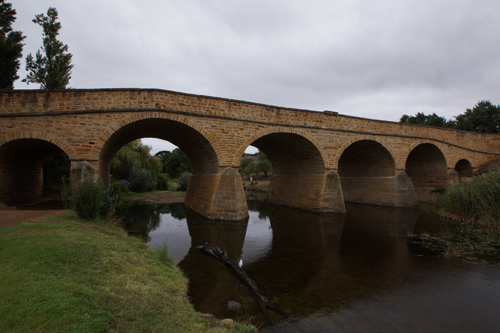
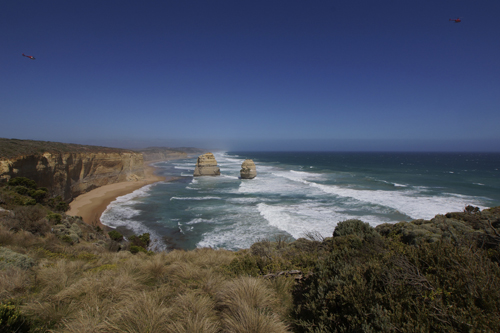
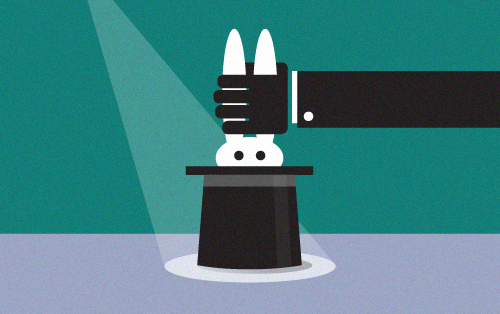
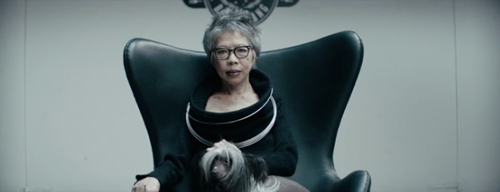




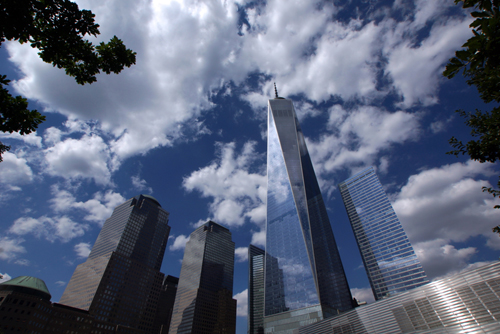
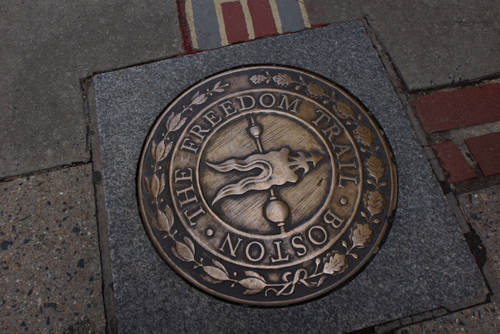
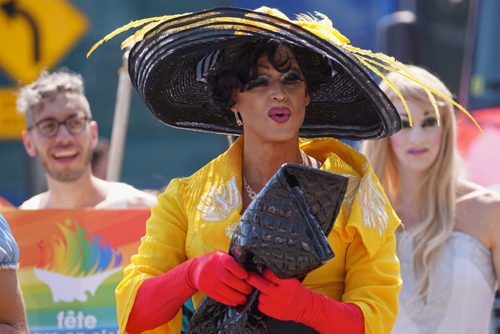
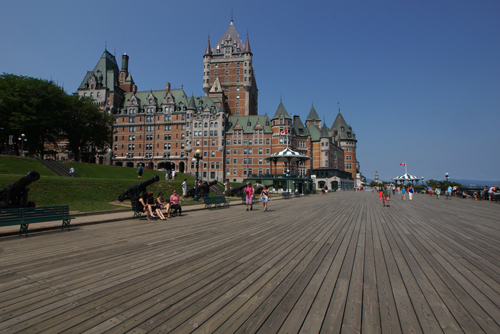










Is the truth really out there?
April 6th, 2016Recently I watched six new episodes of the very successful science fiction TV series, ‘The X-Files’.
The original series ran from September 1993 to May 2002. Written by Chris Carter and staring David Duchovny and Gillian Anderson, there were 202 episodes and two feature films. The second film was released in 2008.
It was the longest running science fiction series in US history.
I think that this latest 6 episode series is a fishing expedition by 20th Century Fox Television. Each episode was so completely different that I can’t help but feel they are all part of an elaborate market research program.
Some episodes were verging on ‘slap-stick’ while others continued with the old protagonists and conspiracy theories.
The producers even introduced Fox and Scully clones.
Its been 8 years since the last film and 14 years since since the last series, so the market’s attitudes towards the characters and plots may well have shifted.
Will there be more X-Files and what will be the theme?
The truth is probably out there, or at least buried in the market research.
Posted in Comment, Marketing | No Comments »